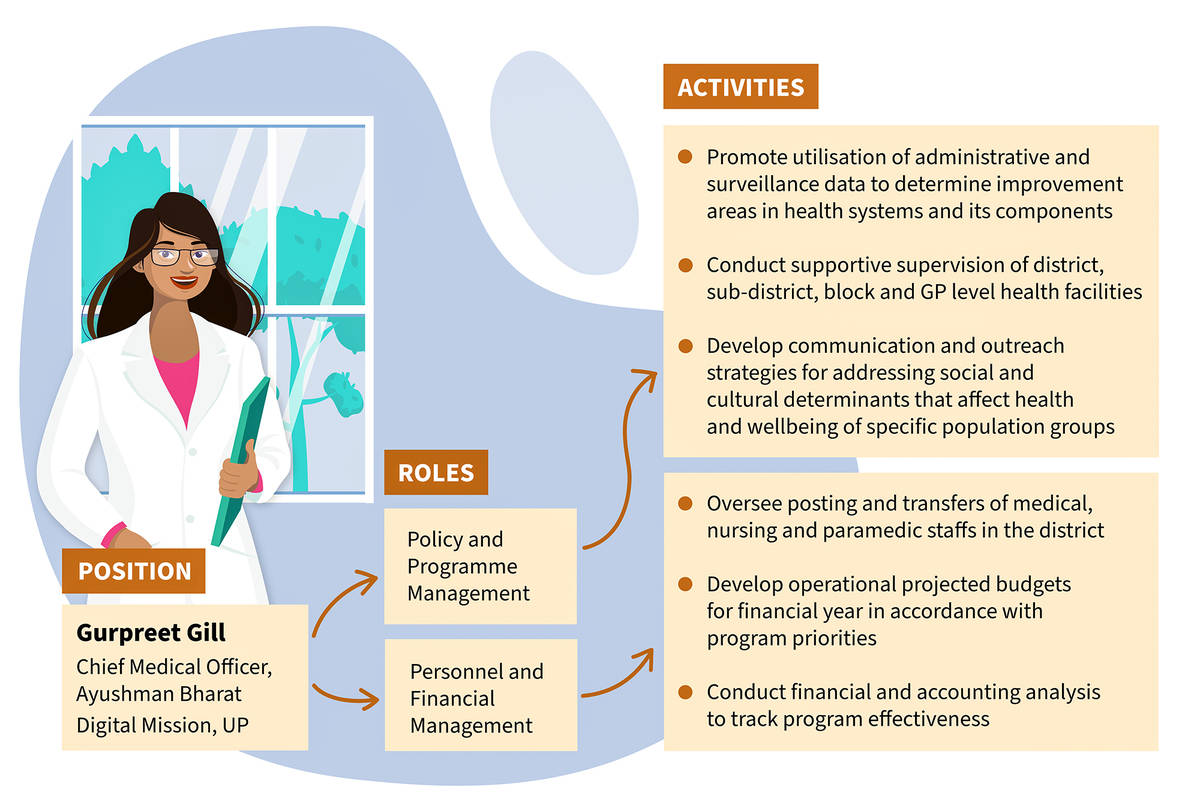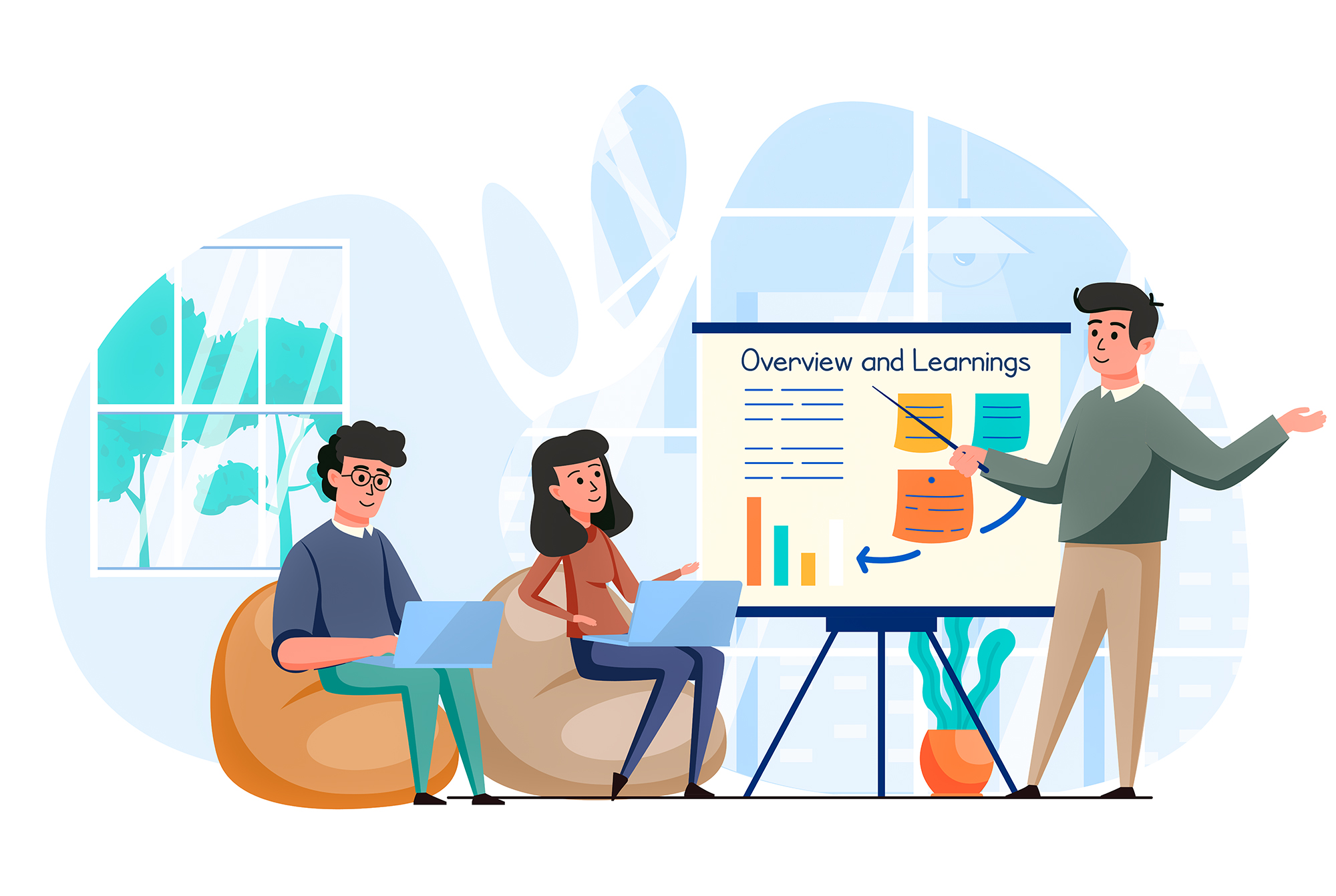Overview and Learnings: Workshops on competency-based approach to capacity building
Introduction
Over the last two years, C-LOP has worked extensively to sediment its approach on competency-based capacity building. This approach helps identify the roles and associated attitudes, skills, and knowledge that a public official must have to effectively perform in their positions. To implement this, our team created varied collateral such as; pamphlets, infographics, how-to guides, and conceptual notes on the criticality of competencies and how to identify them for the roles being performed. We then leveraged this collateral to conduct several workshops, including with three Central Training Institutes (CTIs) in 2021- Indian Institute of Public Administration, The Institute of Secretariat Training and Management and Lal Bahadur Shastri National Academy of Administration. These training experiences not only enriched our internal understanding of competencies and its use in the government, but also pushed us to refine our collateral and the facilitative manner in which they were used in these workshops.
To build on these learnings and engage with public officials across sectors and geographies, C-LOP partnered with three non-governmental organisations (NGOs) working in the health sector. Similar to our engagements with CTIs, we conducted workshops with each of the organisations to build internal staff capacity on how to identify the various roles performed by public officials in the health sector, and the competencies required to effectively perform in them.
Our Engagements
1. International Innovation Corps (IIC)
Scope of work: IIC has partnered with the Uttar Pradesh Technical Support Unit (UPTSU) to work on the Ayushman Bharat Digital Mission (ABDM). The project team is working with the state to build institutional and organisational digital capacity to adopt and use digital health platforms.
Our Intervention: C-LOP conducted a half-day workshop in November, 2021 with a few IIC participants. The objective of this workshop was to identify and develop competencies for digital health related positions and corresponding roles in the state government, as envisioned under ABDM. The workshop used the example of a Chief Medical Officer’s position working for ABDM in Uttar Pradesh to help participants think through the various roles that one might perform under the mission and the associated attitudes, skills, and knowledge.
Outcome: The IIC team supported in developing eight digital health competencies which will help train officials working under ABDM.
Competency Mapping - PRAC

2. Centre for Global Development (CGD)
Scope of work: CGD has partnered with the Department of Health Research on an institutional arrangement to work with the Health Technology Assessment in India (HTAIn). Using a Health Technology Assessment approach (HTA), HTAIn helps in generation of evidence in the health sector. CGD’s work contributes to understanding how the HTA approach can be applied to different settings and identifying institutional resource requirements for the same, which helps in development of a sustainable Indian model of training that generates internal capacity.
Our Intervention: C-LOP conducted a 2-day workshop in November-December, 2021 with 10 CGD participants. The objective of the workshop was two-fold:
- Developing participants’ capacity to identify the various roles and competencies required by HTAIn employees and draft respective Work Allocation Orders (WAOs) for specific positions.
- Building their capacity to identify courses for HTAIn positions . The overarching goal here was to have competency mapped courses to ensure employees are trained on attitudes, skills, and knowledge that are relevant to their day-to-day roles and responsibilities.
Outcome: The CGD team has drafted three competencies and 12 WAOs for various positions associated with HTAIn.
3. India Health Action Trust (IHAT)
Scope of work: In its role as a UPTSU, IHAT provides techno-managerial support to the Uttar Pradesh government on strengthening Reproductive, Maternal, Newborn and Child Health (RMNCH) and Nutrition programmes. As part of this focus area, IHAT is working with C-LOP to implement the competency-based approach to capacity building for the Auxiliary Nurse Midwife position (ANM).
Our Intervention: To facilitate this, C-LOP conducted its first in-person day-long workshop in July, 2022 with 14 participants from IHAT as well as clinical experts from Johns Hopkins University, International Innovation Corps, and JHPIEGO. The objective of this workshop was to build the capacity of clinical and implementation/operational stakeholders working with ANMs on how to articulate their roles and identify associated attitudes, skills, and knowledge.
Outcome: IHAT developed a set of roles and a competency dictionary for ANMs.
Going Forward
At the end of each workshop, our team held debrief sessions to identify areas of improvement, key takeaways, as well as recognise parts of the workshop that went well. Each learning was then incorporated into the format and content for succeeding workshops. Here’s a round-up of our lessons.
Conceptual Learnings
1. Focus on the why of the process of arriving at roles and competencies
Given our focus on building the capacity of our partners in implementing a competency-based approach with public officials with whom they interact, it was critical to establish ‘why’ roles and competencies are important, both as standalone and as interlinked constructs. This step contextualises the approach and explains why it may be beneficial for public officials.
2. Breaking down of concepts
Competencies, as a term, can often be ambiguous and mean different things to different people.
To demystify this ambiguity, we experimented with a model that broke down a competency into its three constituents - attitudes, skills, and knowledge - to ensure that all participants are on the same page. This helped participants in clearly understanding and visualising a competency and, as a result, arriving at standard definitions for a specific positions in the government.
3. Establish guiding principles for drafting key concepts like roles and competencies
One of the primary goals of a competency-based approach is to create a standardised language for capacity building through competencies, across the government.
Over a period of time, after conducting a few training workshops, the team established some guiding principles for what is and isn’t a competency. This helped participants draw boundaries for the exercise. Going forward, the team will continue to build on these guiding principles.
4. Check for understanding
A competency based approach might be a new concept for many . To ensure no participant is left behind, we incorporated simulated scenarios, questions, and use-cases, particularly during our IHAT workshop. This pushed the participants to apply concepts and ask questions, if any.
5. Diversity of participants
During the CGD workshop, we had participants working on a variety of programs/schemes, ranging from HTAin to regional resource centres responsible for training HTAIn employees, to a few individuals working on other National Health Authority related schemes/programs.
To leverage participant diversity during workshops, we designed customised activity prompts for the participants while keeping their expertise in mind.
These experiences not only helped C-LOP revisit and finetune its understanding of how to conduct workshops, but also helped us make a significant contribution to our vision of enhancing officials' working capacities through a competency-based capacity building approach.



Add new comment